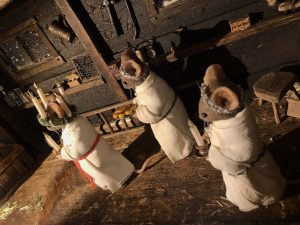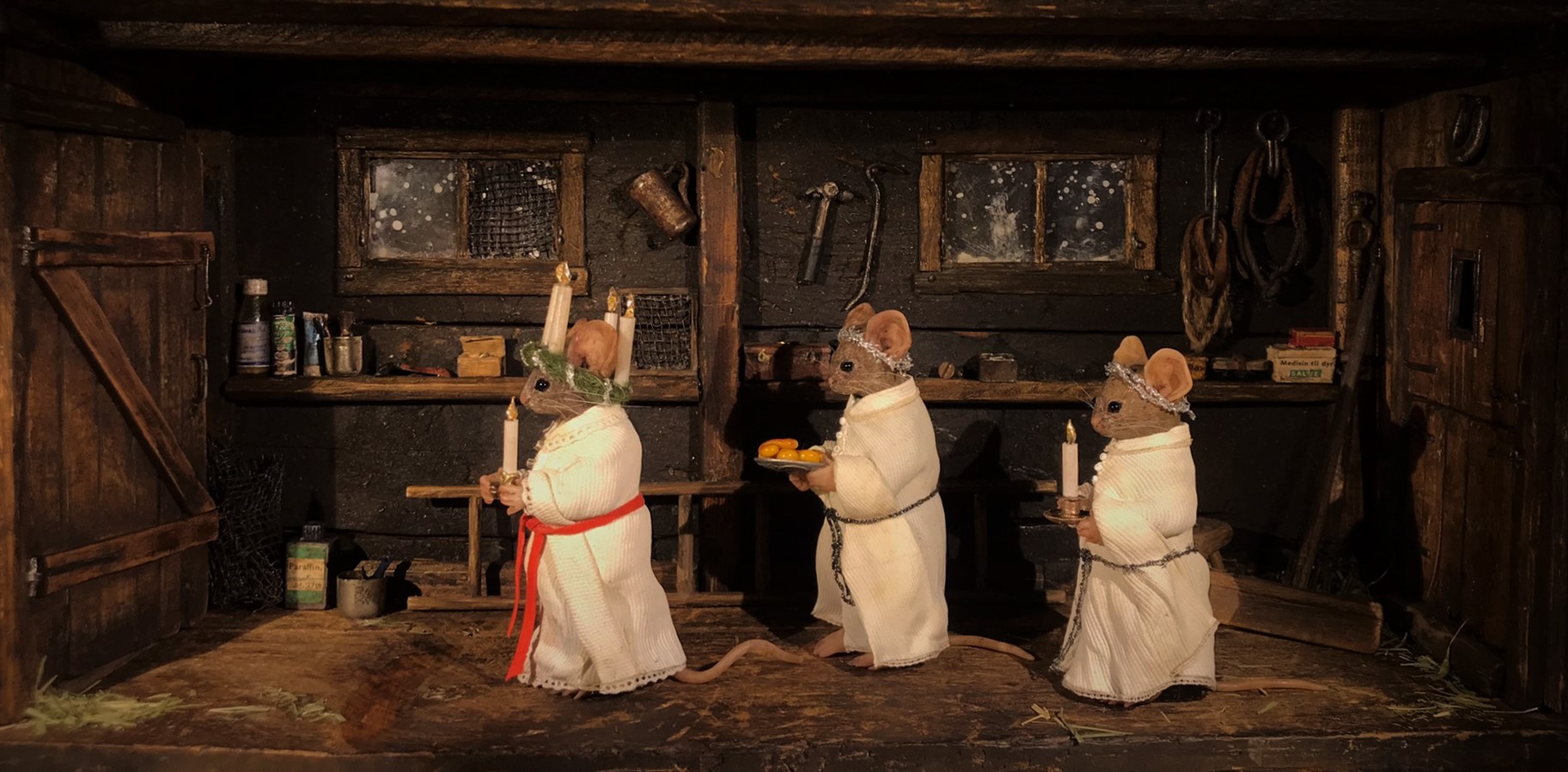Lussi Langnatt – The Most Dangerous Night of the Year
Santa Lucia/Saint Lucy
Saint Lucia of Syracuse was a woman born in the 280s in Sicily, Italy. There are several legends surrounding the story of what happened to her. What is certain is that she was martyred on December 13th in 304 AD. She was declared Saint after her death. She became patreon saint of the blind, as she had her eyes gouged out.

The Lucia celebration, as we know it in Scandinavia, started in Sweden in 1927, but it did not remain confined to one country. It eventually spread to other Scandinavian nations, becoming a beloved tradition for many.
A young girl, dressed in a white robe, wears a crown made of evergreen branches and decorated with candles. She leads a procession where children carry St. Lucia buns and candles, and they sing traditional Lucia songs that add to the magical atmosphere.
The celebration is significant because it marks the beginning of the Christmas season. It is also meaningful because it brings hope and light during the darkest time of the year, reminding us to find joy even in challenging moments.

We have called the night between the 12th and 13th of December Lussi Langnatt because, according to the old Julian calendar, it was the longest night of the year, marking the winter solstice. According to old folklore, this night was especially perilous because all kinds of evil forces were believed to be unleashed as light and dark fought for dominance.
The dangerous Lussi, described as an underground witch, vette, or demon, was said to be out on this night. Her mission was to ensure that housework was completed on time for the Christmas celebration. But if she discovered that things were not as they should be, she would become furious, and her wrath could even destroy a chimney.
So, it was crucial to stay indoors, as no one was supposed to be outside under the open sky on Lussi Night. It was believed to be the most dangerous night of the year.

Watercolor by Ingvild Eiring, 2021
Lussi Night was the only night of the year when animals could talk to each other, and this made the occasion feel magical and mysterious. Because of this unique belief, I wanted the three Lucias to be inside a stable or barn, where the animals’ secret conversations could unfold around them.
Lucias in progress


Lussekatter, or “Lussicats,” are the traditional wheat pastries flavored with saffron. The buns are shaped like the sun, and their bright yellow color is meant to symbolize the sun and its light.
In my childhood, my siblings and I would dress up in Lucia outfits, and all the lights in the house would be turned off. Then, we would walk into the living room carrying candles and freshly baked lussekatter for our parents. Because our winters were so long and dark, this was a night we always looked forward to.

From my collection of vintage boxes and magazines, I always find the elements I need to create miniatures. Because these items hold so much charm and character, they are perfect for bringing my miniature creations to life.
I used quite a lot of scrap metal for this scene, and the process involved breaking, sawing, and cutting various details and elements. Because these pieces could serve as a base for something entirely new, they became essential to bringing the scene to life.






















